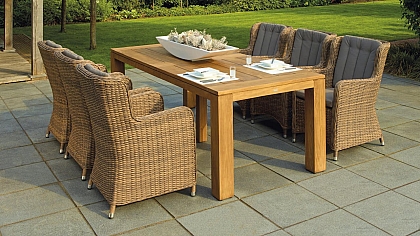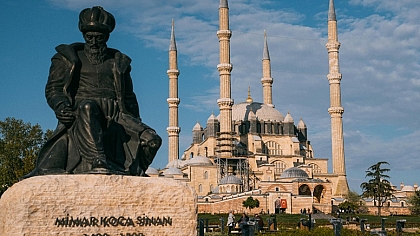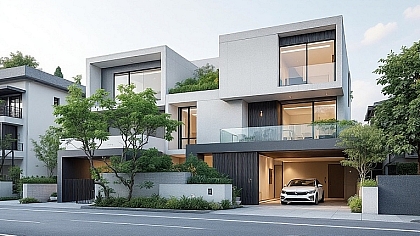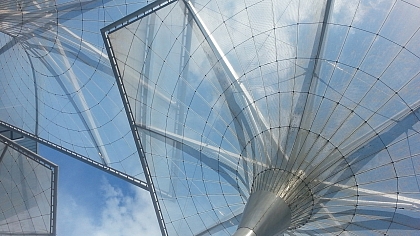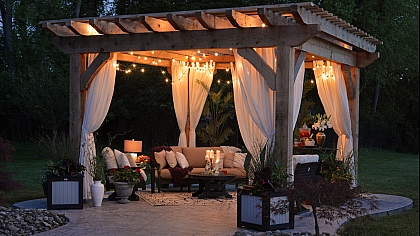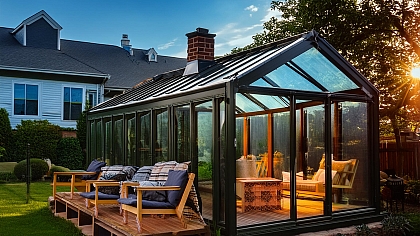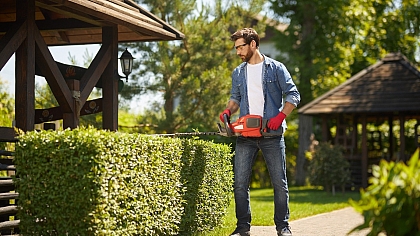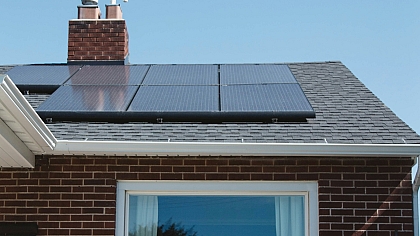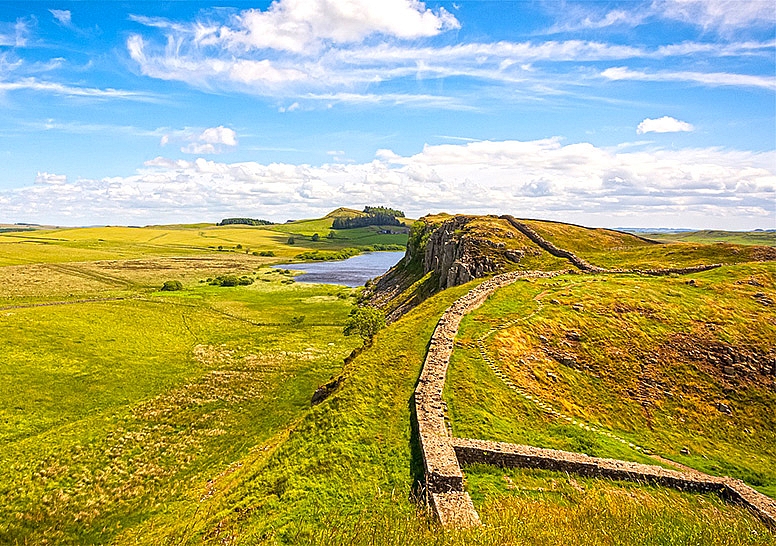
From East to West: A Historical Perspective on Building and Landscaping
Building and landscaping have been an integral part of human history for thousands of years. From the ancient Western world to Islamic architecture, these practices have evolved, reflecting the changing needs and values of different societies.
Let's look into the intriguing history of building and landscaping, highlighting key moments and trends that have shaped these practices into what we see today.
Ancient Western Landscaping
The ancient Greeks and Romans believed that the natural world had a powerful impact on human well-being.
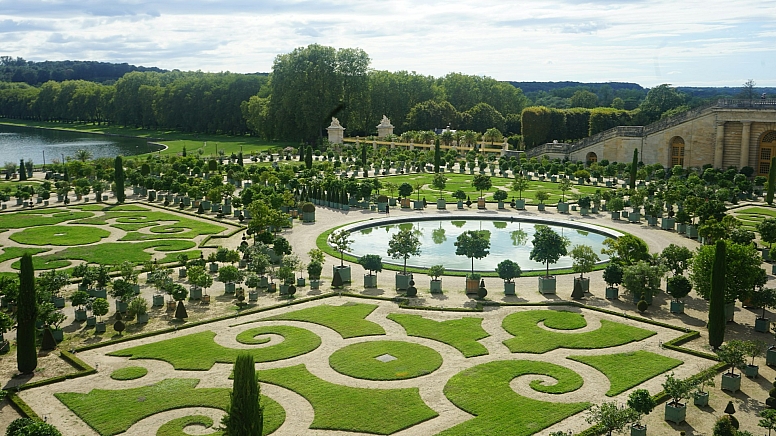
They saw gardens and landscapes as an extension of this belief, creating spaces that were both beautiful and functional. Greek gardens were typically simple, with a focus on symmetry and balance. These gardens often featured small fountains and pools, as well as fragrant herbs and fruit trees.
The Romans, on the other hand, preferred more elaborate gardens, with exotic plants, statues, and water features like fountains and pools. Roman gardens were often designed to be seen from above, with intricate geometric patterns and mosaics.
Here are some examples of ancient Western landscaping:
-
The Hanging Gardens of Babylon: Regarded as one of the Seven Wonders of the Ancient World, the Hanging Gardens of Babylon were an engineering marvel. Although their existence is debated, they are described in ancient texts as a series of terraced gardens built by King Nebuchadnezzar II in the ancient city of Babylon (in modern-day Iraq). The gardens were said to have been irrigated by a complex system of water channels and featured a variety of trees, shrubs, and flowers.
-
The Gardens of Versailles: Built during the 17th century in France, the Gardens of Versailles are a prime example of formal French garden design. Designed by landscape architect André Le Nôtre, the gardens feature meticulously manicured lawns, geometrically arranged flower beds, ornate fountains, and grandiose sculptures. The gardens served as a symbol of the power and prestige of the French monarchy.
- The Gardens of Pompeii: The ancient Roman city of Pompeii, buried by the eruption of Mount Vesuvius in 79 AD, was home to several well-preserved gardens. These gardens, found within the villas of Pompeii's affluent residents, typically featured lush vegetation, shaded walkways, and ornamental ponds. The House of the Vettii, for example, contains a beautifully landscaped garden with decorative frescoes and a central fountain.
These examples highlight the diversity and sophistication of ancient Western landscaping, showcasing the ingenuity and aesthetic sensibilities of past civilizations.
Renaissance Architecture and Gardens
During the Renaissance, European architecture and landscaping underwent a dramatic transformation.
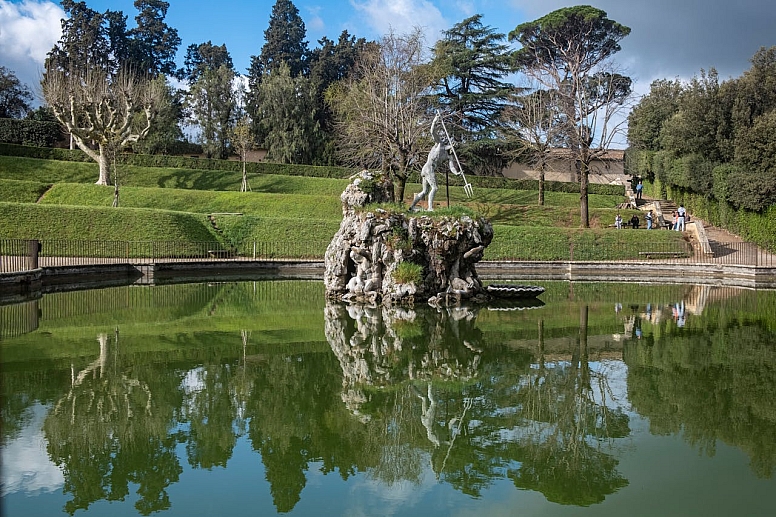
The focus shifted from function to aesthetics, and buildings became more elaborate and ornate. Renaissance gardens were heavily influenced by the classical Greek and Roman styles, with a focus on symmetry and balance.
These gardens often featured fountains, grottoes, and statuary. The use of topiary, or the art of shaping plants into decorative forms, became popular during this period.
Here are some examples of Renaissance architecture and gardens:
-
Boboli Gardens (Giardino di Boboli): Located behind the Pitti Palace in Florence, Italy, the Boboli Gardens is one of the most famous examples of Renaissance garden design. Created in the 16th century, the gardens feature a harmonious blend of formal Italian Renaissance layout and naturalistic elements. Visitors can explore terraced lawns, ornamental ponds, grottos, and sculptures, all set against the backdrop of the Tuscan hills.
-
Villa Lante: Situated in Bagnaia, Italy, Villa Lante is celebrated for its exquisite Renaissance gardens. Designed by architect Giacomo Barozzi da Vignola in the 16th century, the gardens are renowned for their elaborate water features, including cascades, fountains, and waterfalls. The layout of the gardens is characterized by symmetrical terraces, axial pathways, and lush greenery, creating a sense of harmony and balance.
-
Villa d'Este: Located in Tivoli, Italy, Villa d'Este is renowned for its stunning Renaissance gardens and elaborate water features. Built in the 16th century, the gardens are adorned with ornate fountains, sculpted hedges, and lush vegetation. The highlight of the gardens is the Fountain of Neptune, a grandiose water feature designed by sculptor Bernini, which symbolizes the power of the Este family.
-
Villa Medici: Nestled in the hills above Florence, Italy, Villa Medici is celebrated for its Renaissance architecture and gardens. Designed by architect Michelozzo di Bartolomeo in the 15th century, the gardens feature formal Italian Renaissance elements, including geometrically shaped flower beds, manicured lawns, and ornamental statues. The villa itself is an exemplary specimen of Renaissance architecture, characterized by its symmetrical facade and harmonious proportions.
These examples exemplify the magnificence and sophistication of Renaissance architecture and gardens, showcasing the era's emphasis on symmetry, proportion, and classical ideals.
Islamic Architecture and Gardens
Islamic architecture and landscaping emerged in the 7th century and were heavily influenced by the religion of Islam.
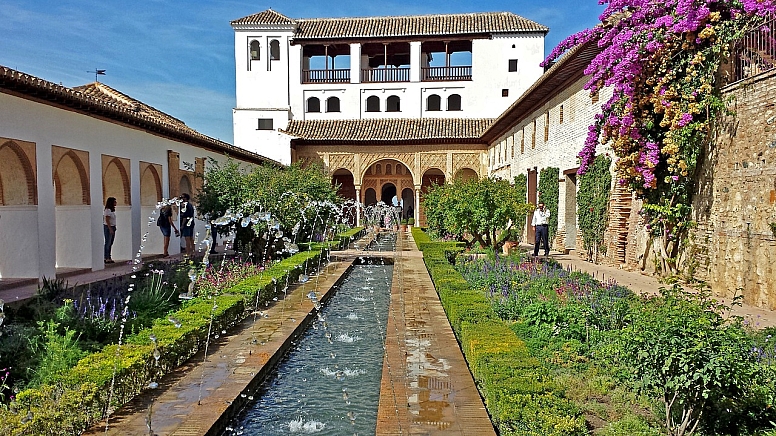
The design of Islamic buildings was focused on creating a sense of tranquillity and spirituality, with features like courtyards, fountains, and intricate tilework. Islamic gardens were also highly structured, with geometric patterns and water features.
These landscapes were designed to be a place of refuge and relaxation, as well as a reflection of Islamic values.
Here are some examples of Islamic architecture and gardens:
-
Alhambra: Located in Granada, Spain, the Alhambra is perhaps the most iconic example of Islamic architecture and gardens. Built during the Nasrid Dynasty in the 13th and 14th centuries, the Alhambra is renowned for its exquisite Moorish palaces, courtyards, and gardens. The Generalife Gardens, adjacent to the main complex, feature lush greenery, serene water features, and meticulously landscaped terraces, reflecting the Islamic principles of symmetry, balance, and tranquillity.
-
Al-Azhar Park: Situated in Cairo, Egypt, Al-Azhar Park is a modern interpretation of Islamic garden design. Built in the early 21st century on the site of a former garbage dump, the park features traditional Islamic elements, including geometric patterns, shaded walkways, and reflective pools. The park offers stunning views of historic Cairo and the surrounding skyline, providing a tranquil retreat amidst the bustling city.
-
Bagh-e Fin (Fin Garden): Located in Kashan, Iran, Bagh-e Fin is a historic Persian garden dating back to the 16th century. Designed during the Safavid Dynasty, the garden features lush vegetation, shaded pathways, and ornate water features, including qanats (underground aqueducts) and fountains. The garden's symmetrical layout and intricate tilework reflect the Islamic principles of harmony, order, and beauty.
-
Generalife: Another prominent feature of the Alhambra complex, the Generalife was the summer palace of the Nasrid rulers of Granada. The Generalife Gardens are renowned for their serene beauty and architectural elegance, featuring terraced gardens, shaded courtyards, and bubbling fountains. The gardens are adorned with fragrant roses, citrus trees, and aromatic herbs, creating a sensory oasis that evokes the spirit of Islamic paradise gardens.
These examples showcase the diversity and splendour of Islamic architecture and gardens, highlighting the profound influence of Islamic culture and aesthetics on the built environment.
Modernism and Sustainable Design
In the 20th century, building and landscaping underwent another transformation, as modernism and sustainable design became popular. Modernist architecture rejected the ornate styles of the past, favouring clean lines and functional designs.
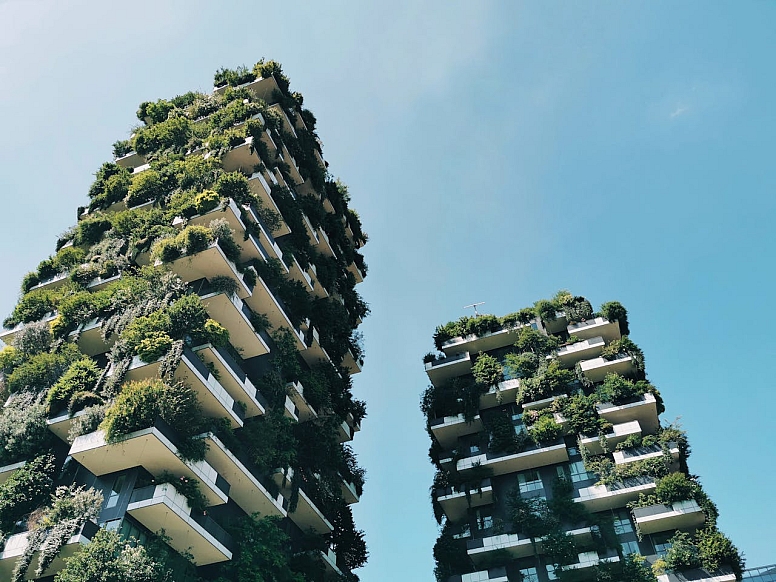
The use of new materials like steel and concrete became popular, and buildings were designed to be more energy-efficient. Landscaping also became more naturalistic, with an emphasis on preserving and enhancing the environment. Sustainable design principles, like using renewable materials and reducing waste, also became more widely adopted.
Here are some examples of modernism and sustainable design:
-
The Edge, Amsterdam, Netherlands: The Edge is a prime example of modern architecture designed with sustainability at its core. Completed in 2015, this innovative office building boasts a range of eco-friendly features, including solar panels, rainwater harvesting systems, and energy-efficient LED lighting. The building is also equipped with smart sensors and advanced automation systems that optimize energy usage and enhance occupant comfort. The Edge has received numerous accolades for its sustainable design, including being crowned the world's most sustainable office building by BREEAM (Building Research Establishment Environmental Assessment Method) in 2016.
-
Bosco Verticale (Vertical Forest), Milan, Italy: Bosco Verticale is a groundbreaking residential complex comprising two towers covered in lush vegetation. Completed in 2014, this vertical forest is designed to absorb CO2, filter pollutants from the air, and provide habitat for wildlife. The towers feature a diverse array of plant species, including trees, shrubs, and perennials, creating a green oasis in the heart of Milan. Bosco Verticale has received international acclaim for its innovative approach to urban greening and sustainable living.
-
Masdar City, Abu Dhabi, UAE: Masdar City is a pioneering eco-city project that aims to be one of the world's most sustainable urban developments. Designed by Foster + Partners, Masdar City features cutting-edge renewable energy technologies, water-saving systems, and zero-carbon transportation options. The city is powered by solar energy and utilizes advanced techniques such as district cooling and wastewater recycling to minimize environmental impact. Masdar City serves as a model for sustainable urban planning and has attracted attention from around the globe for its ambitious vision of a low-carbon future.
-
One Central Park, Sydney, Australia: One Central Park is a mixed-use development located in the heart of Sydney's Central Park precinct. Completed in 2013, this iconic project features two residential towers adorned with vertical gardens designed by renowned artist Patrick Blanc. The towers are equipped with solar panels, rainwater harvesting systems, and energy-efficient lighting, making them among the greenest buildings in Australia. One Central Park has won numerous awards for its innovative design and commitment to sustainability, including the prestigious International Highrise Award in 2014.
These examples demonstrate the transformative potential of modernism and sustainable design in creating healthier, more resilient, and environmentally friendly built environments.
Future Trends in Building and Landscaping
As we move into the future, building and landscaping will likely continue to evolve. One of the biggest trends is the increased use of technology, like smart building systems and digital landscaping tools. This technology will allow for more precise and efficient design and construction processes.
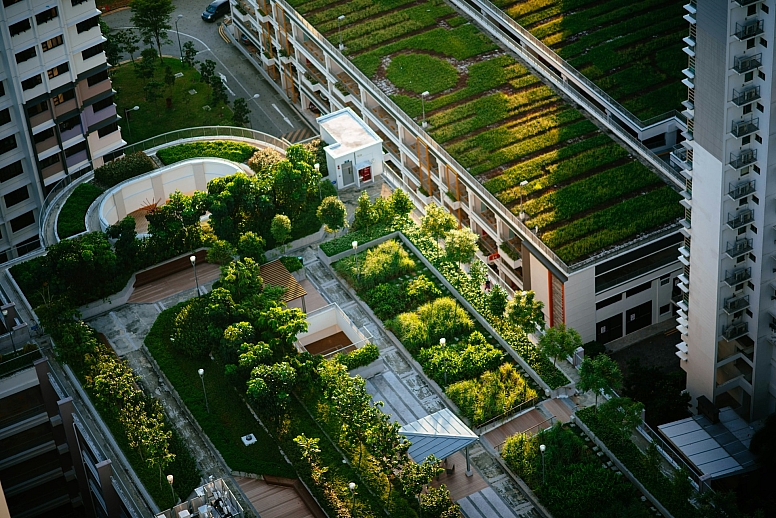
Another trend is a greater emphasis on sustainability and eco-friendly design principles. This includes using renewable materials, reducing waste, and creating buildings and landscapes that work in harmony with the natural environment.
There will also be a greater emphasis on creating spaces that promote well-being and mental health, with designs that encourage physical activity, relaxation, and connection with nature. Finally, more diverse and inclusive designs will become more common, reflecting the needs and values of a multicultural society.
Here are some examples of future trends in building and landscaping:
-
Green Roofs and Living Walls: As cities grapple with the challenges of urbanization and climate change, green roofs and living walls are poised to become increasingly prevalent. These innovative features help mitigate the urban heat island effect, improve air quality, and provide habitat for wildlife. In the future, we can expect to see more buildings incorporating green roofs and living walls as standard practice, creating healthier and more sustainable urban environments.
-
Smart Buildings and IoT Integration: The rise of the Internet of Things (IoT) is revolutionizing the way buildings are designed, constructed, and managed. Smart building systems can optimize energy usage, enhance occupant comfort, and improve operational efficiency. In the future, buildings will become increasingly interconnected, with sensors, actuators, and AI-driven algorithms working together to create more responsive and adaptive environments.
-
Biophilic Design: Biophilic design seeks to reconnect people with nature by incorporating natural elements and patterns into the built environment. This approach has been shown to improve mental health, boost productivity, and foster a sense of well-being. In the future, we can expect to see more buildings and landscapes designed with biophilic principles in mind, featuring elements such as natural lighting, greenery, and water features.
-
Regenerative Design: Regenerative design goes beyond sustainability to create buildings and landscapes that actively contribute to ecological restoration and resilience. This approach seeks to mimic the principles of natural ecosystems, enhancing biodiversity, sequestering carbon, and improving soil health. In the future, regenerative design will become increasingly important as we seek to address pressing environmental challenges and create more resilient communities.
-
Prefab and Modular Construction: Prefabricated and modular construction techniques offer numerous advantages, including reduced construction time, lower costs, and improved quality control. In the future, we can expect to see greater adoption of prefab and modular construction methods, particularly in dense urban environments where space is limited and construction timelines are tight. These techniques will enable faster, more efficient, and more sustainable building practices.
-
Virtual Reality (VR) and Augmented Reality (AR) in Design: Virtual reality (VR) and augmented reality (AR) are revolutionizing the design process, allowing architects, designers, and clients to visualize and experience spaces in immersive digital environments. In the future, VR and AR technologies will become indispensable tools for designing and planning buildings and landscapes, enabling more collaborative and interactive design processes.
These examples represent just a few of the exciting future trends shaping the fields of building and landscaping. As technology advances and societal priorities evolve, we can expect to see even greater innovation and creativity in the built environment.
Building and landscaping have a rich and diverse history, reflecting the changing needs and values of different societies.
From the simple gardens of ancient Greece to the sustainable designs of today, these practices have evolved to reflect the changing needs and values of humanity.
As we move into the future, it will be exciting to see how building and landscaping continue to evolve and shape the world around us.


